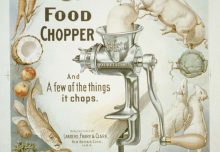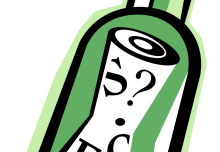Writing needs to reflect speech – which is why punctuation marks that add pauses are so important.
I’ve already written about how to use commas – so right now I’ll simply say they add the smallest pause of all, such as if you’re adding a description. For example:
The burglar, who was feeling sleepy, decided to call it a night.
Colons, on the other hand, introduce a much longer, more emphatic pause – ie:
And the winner of cat burglar of the year is: Dan Kaufman!
A colon is a little like a drumroll: it builds up anticipation and precedes the key information.
In business and web writing, a colon is most often used before a bullet point list. For example:
The burglar’s favourite cat colours are:
- ginger
- grey
- white.
And then there’s the semicolon. Some people think of it as being a longer pause than a comma and a shorter pause than a colon, which is true: but it’s so much more. And so much harder to use.
The reason why is that it’s usually used before an independent clause – and an independent clause (for those who don’t know) is a group of words that can act as a whole sentence.
For example:
The burglar was feeling sleepy; it was time to call it a night.
That example works with either a semicolon or a full stop in the middle as it was time to call it a night is an independent clause.
Now, if you found all the above easy to understand then maybe you are ready to use semicolons – but if you’re a little confused (and I wouldn’t blame you) then I suggest scrapping the semicolon and using the dash instead.
This suggestion often horrifies writing purists, who insist the semicolon is a marvellous piece of punctuation – and I see their point. Yet after witnessing the semicolon being used incorrectly more often than not, I prefer to simply recommend the dash instead – especially as I have a fondness for it (as my overuse of it in this article alone indicates).
After all, the dash adds the same length of pause as a semicolon but without the risk – it’s almost impossible to screw up. You can use it without having to wonder: is this grammatically correct?
Well … actually, there is one way you can screw it up: namely by using a hyphen instead.
Although most people have no idea that a dash is not the same as a hyphen, they’re not – and a hyphen should never, ever be used to add a pause.
Ever.
Instead, it’s mainly used in compound words (ie The 26-year-old man) or to add prefixes (My ex-girlfriend took my black t-shirt).
A dash is longer than a hyphen – and to complicate matters, there are two different kinds of dash: the en and the em. The en is roughly the width of the letter N and the em the width of the letter M.
Hyphen –
En dash –
Em dash —
In Australia it’s more common to use the en mark with a space on either side of it. For example:
I like frolicking with cats – even though my fiancé sometimes gets jealous.
The easy way to create this is by simply hitting the hyphen key twice in Microsoft Word, which will (usually) automatically convert the two hyphens into an en dash for you. However, you can also insert an en dash by using keyboard shortcuts – for example, on a Mac you can get an en dash by pressing both the option and minus keys (and an em dash by hitting shift, option and minus).
In the US it’s more common to use the em mark with no space on either side – ie:
I like frolicking with cats—even though my fiancé sometimes gets jealous.
However, none of this is set in stone. Some Australians don’t place spaces before and after the en mark, whereas others use the em mark instead. This isn’t incorrect: it’s simply a matter of style.
What does matter, however, is that you use a dash and not a hyphen – and that if you do use a semicolon instead, you know when (and when not) to use it.
Learn more with the Writing Essentials online course
Study at your own pace, whenever and wherever you want.
Taught by a former newspaper editor and journalist, this course is suited for anyone who wants to improve their writing – whether it’s for marketing, journalism, blogging or PR. It’s also ideal for those who want to improve their general writing skills.
It teaches all the basics, including:
- how to write in the active voice
- how to use positive language
- using the right tone of voice and style
- cutting copy
- making your intros stronger
- writing in plain English
- how to write in the inverted pyramid style
- top 10 news criteria (what makes a story interesting)
- frontloading content
- grammar and punctuation
- proofreading tips
- writing great headlines.
Fun and practical, this course is filled with plenty of exercises to allow you to put theory into practice.
Find out more and enrol



